Explore the best places
Results for Forte in Portugal
Castro de Pragança / Castro de Rocha Forte
- heritage
Rua 1º de Dezembro
2550, Pragança
Iron Age fortified settlement, semi-buried.

Forte da Barra de Aveiro / Castelo da Gafanha
- heritage
Barra
3830-565, Barra
Strong built around the year 1640, during the war of restoration. Presents two bastions connected by walls. In one of its walls there is a staircase that connects the upper terrace where he stresses the taillight, for your immeasurable dimension in relation to the remaining building. In the early 19th century, suffered changes to put more apt to military level.
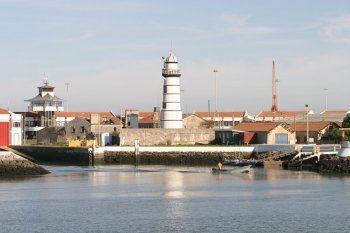
Forte de Esposende / Castelo de São João Baptista
- heritage
Avenida Engenheiro Eduardo Arantes e Oliveira
4740-204, Esposende
Bastioned fortress built at the end of the 17th century and beginning of the 18th century by Dom Pedro II. It was part of the defensive plan of the Portuguese coast and aimed to protect the entrance to the Cávado River. It has a rectangular plan and at each angle there is a bastion and a guardhouse. Between the walls, which are quite ruined, the Lighthouse Tower stands out.
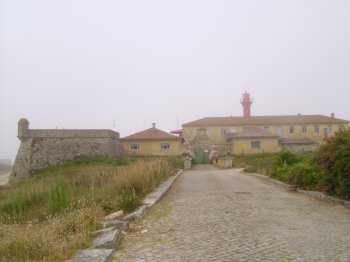
Forte de São Francisco Xavier / Castelo do Queijo
- heritage
Praça Gonçalves Zarco, 20
4100-274, Porto
Built in 1662, in a place called “do Queijo”, to protect the city from the Spanish Fleet. Surrounded by a moat, it presents watch-boxes at the corners. Inside it is the governor’s residence at the time and a chapel. Nowadays it is the stage for many temporary exhibitions.
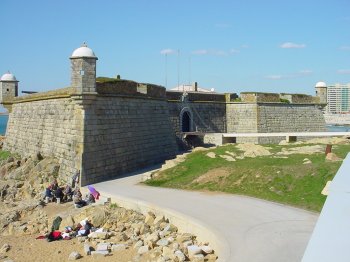
Forte do Bom Sucesso / Museu do Combatente
- heritage
Avenida Brasília
1400-038, Lisboa
Admire the magnificent ashlar masonry with which Francisco Arruda decorated the tower and go up to its 30 meters to view the vast territory you have just visited. At the east side is a sculpture that symbolizes the hydroplane that Gago Coutinho and Sacadura Cabral used to make the Atlantic south aerial crossing, on March, 1922.
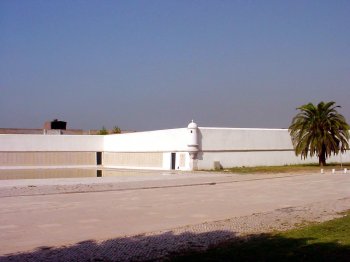
Forte do Monsanto ou do Marquês Sá da Bandeira
- heritage
Avenida 24 de Janeiro, 10
1500, Lisboa
Also called Strong Marquis de Sá de Bandeira, by Decree of 1901, consists of circular redoubt lined by three floors with an equal number of batteries covered with concrete dome fireproof. Inside there is a large cistern. Was classified as 1st class war Square.
Castelo de Santo António / Forte de Santa Catarina
- heritage
Rua do Castelo
9930-138, Lajes do Pico
Old fortification dating from the 18th century, of which only some ruins remain. The entire complex was built in stone masonry, except for the area next to the sea, built in reinforced concrete. Inside, there are remains of an old lime kiln, dating back to the end of the 19th century.

Forte de São João Baptista / Fortaleza de Nossa Senhora da Assunção
- heritage
Avenida do Brasil
4480-659, Vila do Conde
Construction of polygonal plant, bastion, turreted in angles. Strong who served military functions until the 19th century, when it passed the only control the input and output of small boats. Inside there are remnants of bunkers and supplies. It was built in the 17th century and, in 1999, adapted by architects Paul Lobo and Amedeo Mandolesi to hotel and restaurant.
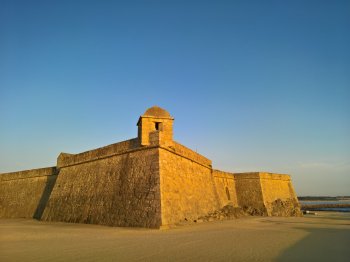
Forte de Nossa Senhora da Guia / Museu Oceanográfico / Museu Bocage
- heritage
Avenida Senhora do Cabo, 939 - EN247
2750-374, Cascais
A fortress built during the reign of Dom João IV, although the exact date of its primitive construction is unknown. There are still several vestiges of that construction, namely a gate with an inscription and the royal arms.
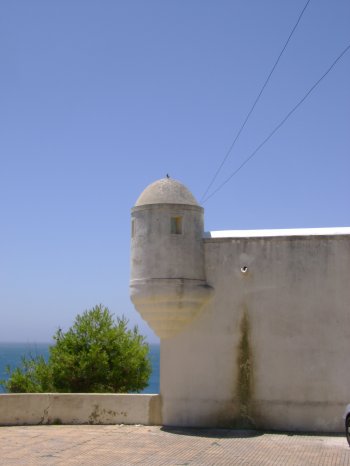
Antiga Residência do Governador do Forte do Bom Sucesso / Casa do Arco da Torre
- heritage
Rua da Praia do Bom Sucesso, 43-47/ Rua do Arco da Torre, 1-6 / Avenida da Índia, 184
1400-035, Lisboa